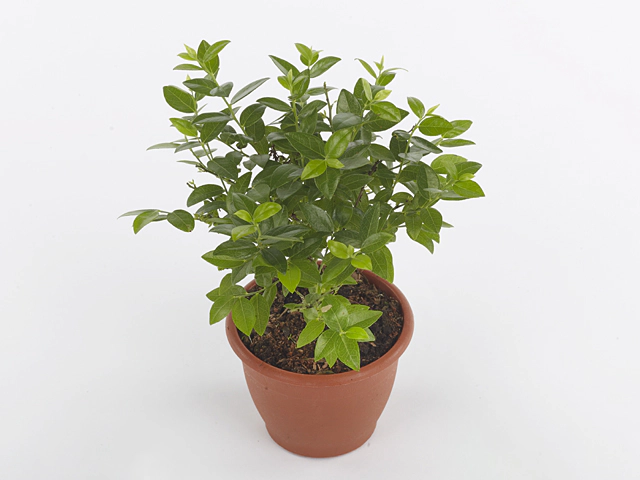Vaccinium (Angustifolium Grp) Berrybux

| Leaf arrangement | spreaded |
| Leaf tip | Blunt/obtuse |
| Leaf margin | Entire |
| Winter hardness | Limited (USDA-zone 8); Good (USDA-zone 5, 6); Reasonable (USDA-zone 7) |
| Leaf, general shape | Elliptic / oval |
| Plant height | 10 - 20 cm |
| Flowering month(s) | April; May |
| Leaf width | 1 - 2 cm |
| Leaf surface | Smooth |
| Leaf duration | Evergreen |
| Leaf size | 2 - 3 cm |
| Plant, growth type | Erect |
| Leaf, main color | Dark green |
| Leaf colour, pattern | Unicolored |
Vaccinium, also known as the Angustifolium Grp, is a group of berries that include popular fruits such as bilberries, huckleberries, and blueberries. These berries are well-loved for their delicious taste and numerous health benefits. In this article, we will take a closer look at the characteristics of Vaccinium plants based on their leaf arrangement, appearance, and growth patterns.
The leaf arrangement of Vaccinium plants is spreaded, meaning that the leaves are positioned at various angles along the stem. The leaf tips are blunt or obtuse, giving them a rounded appearance. The leaf margin is entire, which means that it does not have any teeth or serrations.
When it comes to winter hardness, Vaccinium plants have varying degrees of tolerance depending on the USDA zone. In USDA zone 8, the winter hardness is limited, indicating that these plants may not withstand extremely cold temperatures. However, they fare well in USDA zones 5 and 6, where the winter hardness is classified as good. In USDA zone 7, the winter hardness is considered reasonable.
The general shape of the leaves of Vaccinium plants is elliptic or oval, with a width of 1-2 cm and a size of 2-3 cm. The leaves have a smooth surface and are evergreen, meaning they stay green all year round. This characteristic adds to their aesthetic value in gardens and landscaping.
Vaccinium plants typically grow to a height of 10-20 cm, making them relatively small in stature. This compact size makes them suitable for containers, window boxes, or as ground cover.
In terms of flowering, Vaccinium plants bloom during the months of April and May. The flowers of these plants are delicate and come in various colors, including white, pink, and light purple. The bloom adds a splash of color to gardens and attracts beneficial pollinators like bees.
The main color of the leaves is a dark green, which signifies their healthy growth. The leaf color remains consistent without any variegation or patterns. This dark green color serves as a beautiful backdrop for the berries that the Vaccinium plants produce.
The berries of Vaccinium plants are known for their sweet and juicy flavor, making them a favorite ingredient in pies, jams, and smoothies. Beyond their delicious taste, these berries are packed with antioxidants, vitamins, and minerals that promote overall health and well-being.
In conclusion, Vaccinium plants, including bilberries, huckleberries, and blueberries, offer a range of desirable qualities for gardeners and fruit enthusiasts alike. From their spreaded leaf arrangement to their evergreen foliage and delicious berries, Vaccinium plants are a delightful addition to any landscape or edible garden. Whether grown in containers or directly in the ground, these plants are sure to bring beauty and flavor to your outdoor space.
Market availability index by month:
| Jan. | Feb. | Mar. | Apr. | May | Jun. | Jul. | Aug. | Sep. | Oct. | Nov. | Dec. |
|---|---|---|---|---|---|---|---|---|---|---|---|
| 3 | 3 | 4 | 4 | 3 | 1 | 1 | 1 | 3 | 1 | 2 | 1 |